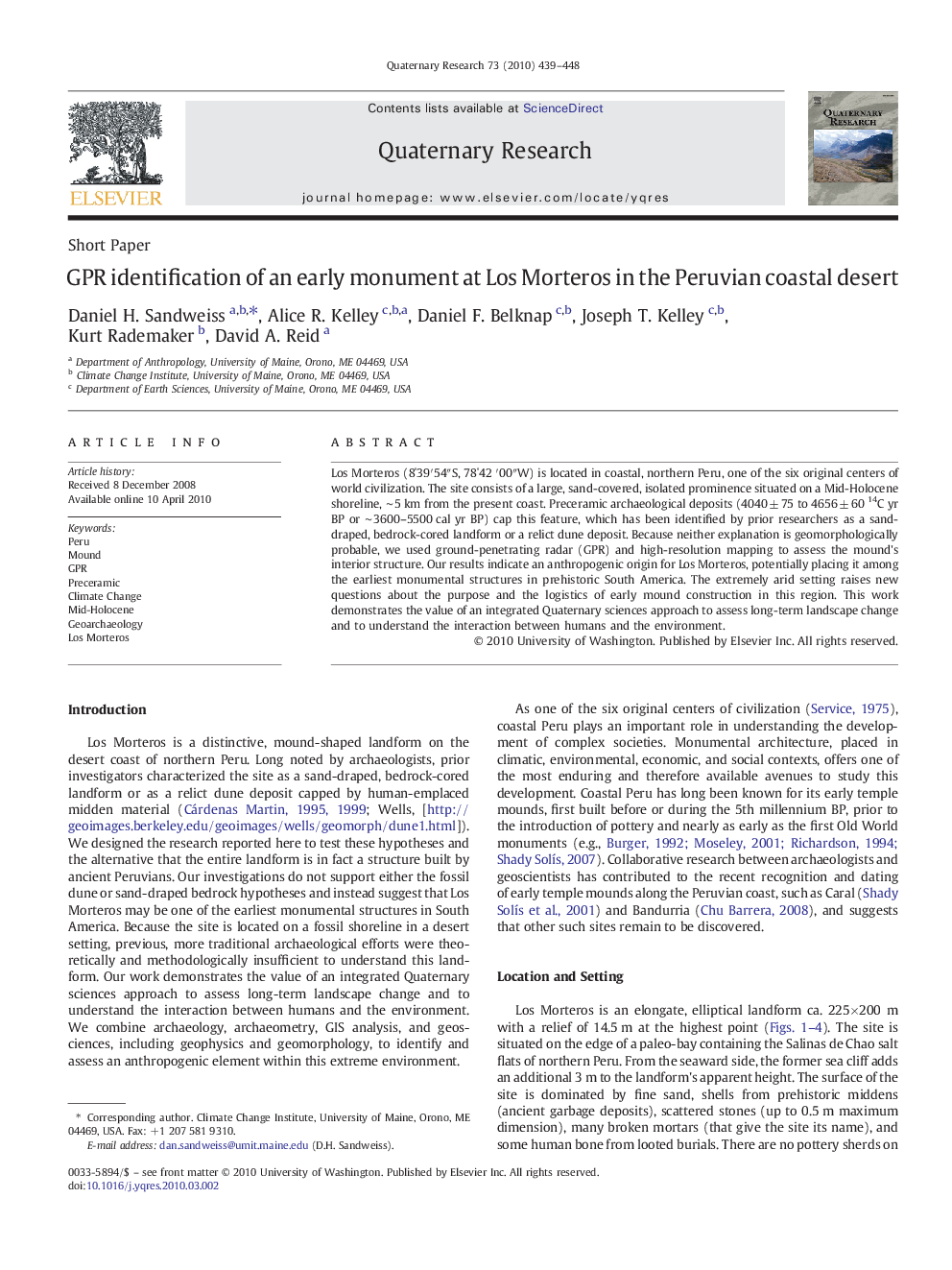| Article ID | Journal | Published Year | Pages | File Type |
|---|---|---|---|---|
| 1045920 | Quaternary Research | 2010 | 10 Pages |
Los Morteros (8˚39′54″S, 78˚42 ′00″W) is located in coastal, northern Peru, one of the six original centers of world civilization. The site consists of a large, sand-covered, isolated prominence situated on a Mid-Holocene shoreline, ∼ 5 km from the present coast. Preceramic archaeological deposits (4040 ± 75 to 4656 ± 60 14C yr BP or ∼ 3600–5500 cal yr BP) cap this feature, which has been identified by prior researchers as a sand-draped, bedrock-cored landform or a relict dune deposit. Because neither explanation is geomorphologically probable, we used ground-penetrating radar (GPR) and high-resolution mapping to assess the mound's interior structure. Our results indicate an anthropogenic origin for Los Morteros, potentially placing it among the earliest monumental structures in prehistoric South America. The extremely arid setting raises new questions about the purpose and the logistics of early mound construction in this region. This work demonstrates the value of an integrated Quaternary sciences approach to assess long-term landscape change and to understand the interaction between humans and the environment.
